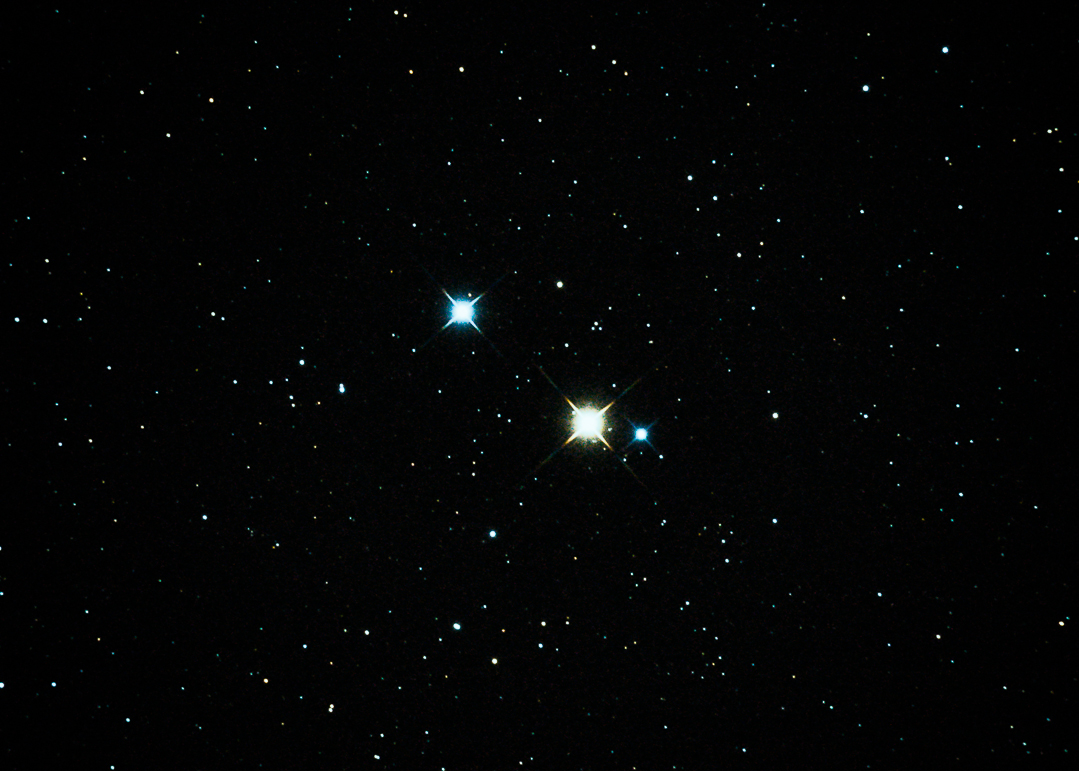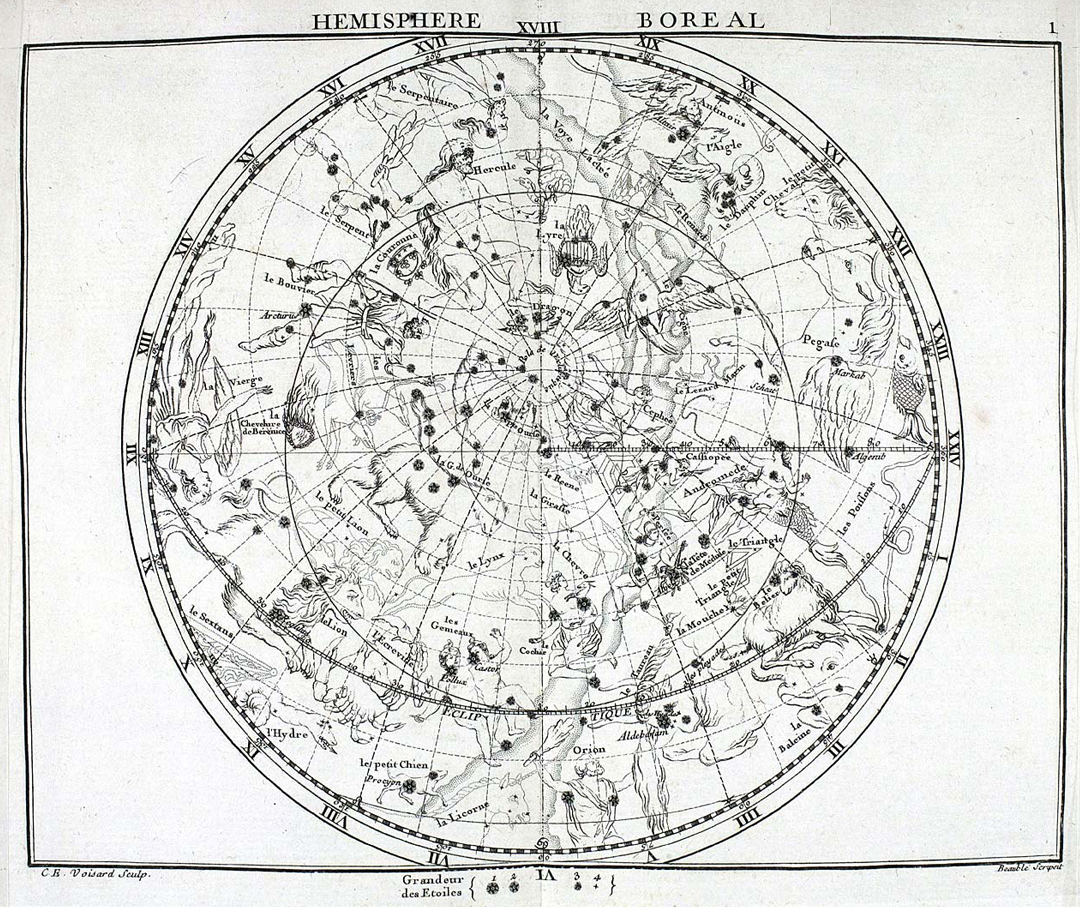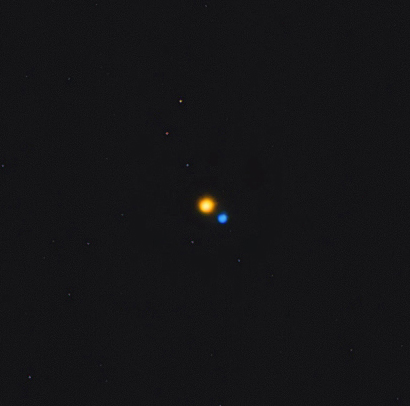|
30 Cygni
30 Cygni is a class A5III (white giant) star in the constellation Cygnus. Its apparent magnitude is 4.83 and it is approximately 610 light years away based on parallax. The Bayer letter ο (omicron) has been variously applied to two or three of the stars 30, 31, and 32 Cygni. 30 Cygni has sometimes been designated as ο1 Cygni with the other two stars being ο2 and ο3 respectively. For clarity, it is preferred to use the Flamsteed designation A Flamsteed designation is a combination of a number and constellation name that uniquely identifies most naked eye stars in the modern constellations visible from southern England. They are named for John Flamsteed who first used them while c ... 30 Cygni rather than one of the Bayer designations. 30 Cygni is about six arc-minutes from 31 Cygni A and seven arc-minutes from 31 Cygni B. That pair is known as ο1 Cygni, while ο2 Cygni is a degree away. Both ο1 and ο2 are 4th magnitude stars. References {{Stars of Cyg ... [...More Info...] [...Related Items...] OR: [Wikipedia] [Google] [Baidu] |
Cygnus (constellation)
Cygnus is a northern constellation on the plane of the Milky Way, deriving its name from the Latinized Greek word for swan. Cygnus is one of the most recognizable constellations of the northern summer and autumn, and it features a prominent asterism known as the Northern Cross (in contrast to the Southern Cross). Cygnus was among the 48 constellations listed by the 2nd century astronomer Ptolemy, and it remains one of the 88 modern constellations. Cygnus contains Deneb (ذنب, translit. ''ḏanab,'' tail)one of the brightest stars in the night sky and the most distant first-magnitude staras its "tail star" and one corner of the Summer Triangle. It also has some notable X-ray sources and the giant stellar association of Cygnus OB2. Cygnus is also known as the Northern Cross. One of the stars of this association, NML Cygni, is one of the largest stars currently known. The constellation is also home to Cygnus X-1, a distant X-ray binary containing a supergiant and unseen ... [...More Info...] [...Related Items...] OR: [Wikipedia] [Google] [Baidu] |
Star
A star is an astronomical object comprising a luminous spheroid of plasma held together by its gravity. The nearest star to Earth is the Sun. Many other stars are visible to the naked eye at night, but their immense distances from Earth make them appear as fixed points of light. The most prominent stars have been categorised into constellations and asterisms, and many of the brightest stars have proper names. Astronomers have assembled star catalogues that identify the known stars and provide standardized stellar designations. The observable universe contains an estimated to stars. Only about 4,000 of these stars are visible to the naked eye, all within the Milky Way galaxy. A star's life begins with the gravitational collapse of a gaseous nebula of material composed primarily of hydrogen, along with helium and trace amounts of heavier elements. Its total mass is the main factor determining its evolution and eventual fate. A star shines for most of its active life due t ... [...More Info...] [...Related Items...] OR: [Wikipedia] [Google] [Baidu] |
Hipparcos Objects
''Hipparcos'' was a scientific satellite of the European Space Agency (ESA), launched in 1989 and operated until 1993. It was the first space experiment devoted to precision astrometry, the accurate measurement of the positions of celestial objects on the sky. This permitted the first high-precision measurements of the intrinsic brightnesses (compared to the less precise apparent brightness), proper motions, and parallaxes of stars, enabling better calculations of their distance and tangential velocity. When combined with radial velocity measurements from spectroscopy, astrophysicists were able to finally measure all six quantities needed to determine the motion of stars. The resulting ''Hipparcos Catalogue'', a high-precision catalogue of more than 118,200 stars, was published in 1997. The lower-precision ''Tycho Catalogue'' of more than a million stars was published at the same time, while the enhanced Tycho-2 Catalogue of 2.5 million stars was published in 2000. ''Hipp ... [...More Info...] [...Related Items...] OR: [Wikipedia] [Google] [Baidu] |
Durchmusterung Objects
In astronomy, Durchmusterung or Bonner Durchmusterung (BD) is an astrometric star catalogue of the whole sky, compiled by the Bonn Observatory in Germany from 1859 to 1903. The name comes from ('run-through examination'), a German word used for a systematic survey of objects or data. The term has sometimes been used for other astronomical surveys, including not only stars, but also the search for other celestial objects. Special tasks include celestial scanning in electromagnetic wavelengths shorter or longer than visible light waves. Original catalog The 44 years of work on the Bonner Durchmusterung (abbreviated BD), initiated by Friedrich Argelander and largely carried out by his assistants, resulted in a catalogue of the positions and apparent magnitudes of approximately 325,000 stars to apparent magnitude 9–10. The catalogue was accompanied by charts plotting the positions of the stars, and was the basis for the ''Astronomische Gesellschaft Katalog'' (AGK) and '' Smith ... [...More Info...] [...Related Items...] OR: [Wikipedia] [Google] [Baidu] |
Flamsteed Objects
John Flamsteed (19 August 1646 – 31 December 1719) was an English astronomer and the first Astronomer Royal. His main achievements were the preparation of a 3,000-star catalogue, ''Catalogus Britannicus'', and a star atlas called '' Atlas Coelestis'', both published posthumously. He also made the first recorded observations of Uranus, although he mistakenly catalogued it as a star, and he laid the foundation stone for the Royal Greenwich Observatory. Life Flamsteed was born in Denby, Derbyshire, England, the only son of Stephen Flamsteed and his first wife, Mary Spadman. He was educated at the free school of Derby and at Derby School, in St Peter's Churchyard, Derby, near where his father carried on a malting business. At that time, most masters of the school were Puritans. Flamsteed had a solid knowledge of Latin, essential for reading the scientific literature of the day, and a love of history, leaving the school in May 1662.Birks, John L. (1999) ''John Flamsteed, th ... [...More Info...] [...Related Items...] OR: [Wikipedia] [Google] [Baidu] |
A-type Giants
A type or type A may refer to: * A-type asteroid, a type of relatively uncommon inner-belt asteroids * A type blood, a type in the ABO blood group system * A-type inclusion, a type of cell inclusion * A-type potassium channel, a type of voltage-gated potassium channel * A type proanthocyanidin, a specific type of flavonoids * A-type star, a class of stars * Type A Dolby Noise Reduction, a type of Dolby noise-reduction system * Type A climate, a type in the Köppen climate classification * Type A flu, a type of influenza virus * Type A evaluation of uncertainty, an uncertainty in measurement that can be inferred, for example, from repeated measurement * Type A (label), a music label that for example produced the 2004 album '' What Doesn't Kill You...'' by Candiria * Type A personality, a personality type in the Type A and Type B personality theory * Type A submarine, a class of submarines in the Imperial Japanese Navy which served during the Second World War * Hemophilia type A, ... [...More Info...] [...Related Items...] OR: [Wikipedia] [Google] [Baidu] |
Omicron2 Cygni
32 Cygni (32 Cyg, Omicron2 Cyg, ο2 Cyg) is the Flamsteed designation for a binary star system in the Cygnus constellation. It is a 4th magnitude star, which can be seen with the naked eye under suitably dark skies. Parallax measurements give an estimated distance of 1,100 light-years (320 parsecs) from the Earth. However, Schröder et al. (2007) suggest the actual value, after correcting for Malmquist bias, may be closer to 1,174 light-years (360 parsecs). Although it is a spectrsocopic binary with components that cannot be separated visually, it has two entries in the Henry Draper Catalogue, with identical magnitudes and positions, but showing the spectral types of the two components. The Bayer letter ο has been variously applied to two or three of the stars 30, 31, and 32 Cygni. 32 Cygni has been designated as either ο2 or ο3 Cygni. For clarity, it is preferred to use the Flamsteed designation 32 Cygni rather than one of the Bayer designati ... [...More Info...] [...Related Items...] OR: [Wikipedia] [Google] [Baidu] |
Omicron1 Cygni
31 Cygni, also known as ο1 Cygni, Omicron1 Cygni, or V695 Cygni, is a triple star system about 750 light years away in the constellation Cygnus. The Bayer designation ο (omicron) has been variously applied to two or three of the stars 30, 31, and 32 Cygni. 31 Cygni has been designated, variously, as ο1 or ο2 Cygni — therefore for clarity, it is preferred to use the Flamsteed designation 31 Cygni. 31 Cygni consists of a visible pair of stars apart as of 2016, and the brighter of the two is also a spectroscopic binary. 31 Cygni A is also designated HD 192577 and HR 7735, while its 7th-magnitude visual companion is designated HD 192579. Some multiple star catalogues designate a 13th-magnitude star from 31 Cygni A as 31 Cygni B, and HD 192579 as 31 Cygni C. The 13th-magnitude star is likely to be an unrelated background object. The spectroscopic pair are an orange supergiant of spectral type K3Ib and a blue-white star likely to be evolving off the main ... [...More Info...] [...Related Items...] OR: [Wikipedia] [Google] [Baidu] |
Flamsteed Designation
A Flamsteed designation is a combination of a number and constellation name that uniquely identifies most naked eye stars in the modern constellations visible from southern England. They are named for John Flamsteed who first used them while compiling his '' Historia Coelestis Britannica''. (Flamsteed used a telescope, and the catalog also includes some stars which are relatively bright but not necessarily visible with the naked eye.) Description Flamsteed designations for stars are similar to Bayer designations, except that they use numbers instead of Greek and Roman letters. Each star is assigned a number and the Latin genitive of the constellation it lies in (see 88 modern constellations for a list of constellations and the genitive forms of their names). Flamsteed designations were assigned to 2554 stars. The numbers were originally assigned in order of increasing right ascension within each constellation, but due to the effects of precession they are now slightly out o ... [...More Info...] [...Related Items...] OR: [Wikipedia] [Google] [Baidu] |
Constellation
A constellation is an area on the celestial sphere in which a group of visible stars forms a perceived pattern or outline, typically representing an animal, mythological subject, or inanimate object. The origins of the earliest constellations likely go back to prehistory. People used them to relate stories of their beliefs, experiences, creation, or mythology. Different cultures and countries adopted their own constellations, some of which lasted into the early 20th century before today's constellations were internationally recognized. The recognition of constellations has changed significantly over time. Many changed in size or shape. Some became popular, only to drop into obscurity. Some were limited to a single culture or nation. The 48 traditional Western constellations are Greek. They are given in Aratus' work ''Phenomena'' and Ptolemy's ''Almagest'', though their origin probably predates these works by several centuries. Constellations in the far southern sky were ... [...More Info...] [...Related Items...] OR: [Wikipedia] [Google] [Baidu] |
Albireo 20150919
Albireo is a double star designated Beta Cygni (β Cygni, abbreviated Beta Cyg, β Cyg). The International Astronomical Union uses the name "Albireo" specifically for the brightest star in the system. Although designated 'beta', it is fainter than Gamma Cygni, Delta Cygni, and Epsilon Cygni and is the fifth-brightest point of light in the constellation of Cygnus. Appearing to the naked eye to be a single star of magnitude 3, viewing through even a low-magnification telescope resolves it into its two components. The brighter yellow star, itself a very close binary system, makes a striking colour contrast with its fainter blue companion. Nomenclature ''β Cygni'' ( Latinised to ''Beta Cygni'') is the system's Bayer designation. The brighter of the two components is designated ''β¹ Cygni'' or ''Beta Cygni A'' and the fainter ''β² Cygni'' or ''Beta Cygni B''. The system's traditional name ''Albireo'' is a result of misunderstanding and mistranslation. It is ... [...More Info...] [...Related Items...] OR: [Wikipedia] [Google] [Baidu] |
Bayer Designation
A Bayer designation is a stellar designation in which a specific star is identified by a Greek or Latin letter followed by the genitive form of its parent constellation's Latin name. The original list of Bayer designations contained 1,564 stars. The brighter stars were assigned their first systematic names by the German astronomer Johann Bayer in 1603, in his star atlas '' Uranometria''. Bayer catalogued only a few stars too far south to be seen from Germany, but later astronomers (including Nicolas-Louis de Lacaille and Benjamin Apthorp Gould) supplemented Bayer's catalog with entries for southern constellations. Scheme Bayer assigned a lowercase Greek letter (alpha (α), beta (β), gamma (γ), etc.) or a Latin letter (A, b, c, etc.) to each star he catalogued, combined with the Latin name of the star's parent constellation in genitive (possessive) form. The constellation name is frequently abbreviated to a standard three-letter form. For example, Aldebaran in the constellation ... [...More Info...] [...Related Items...] OR: [Wikipedia] [Google] [Baidu] |










